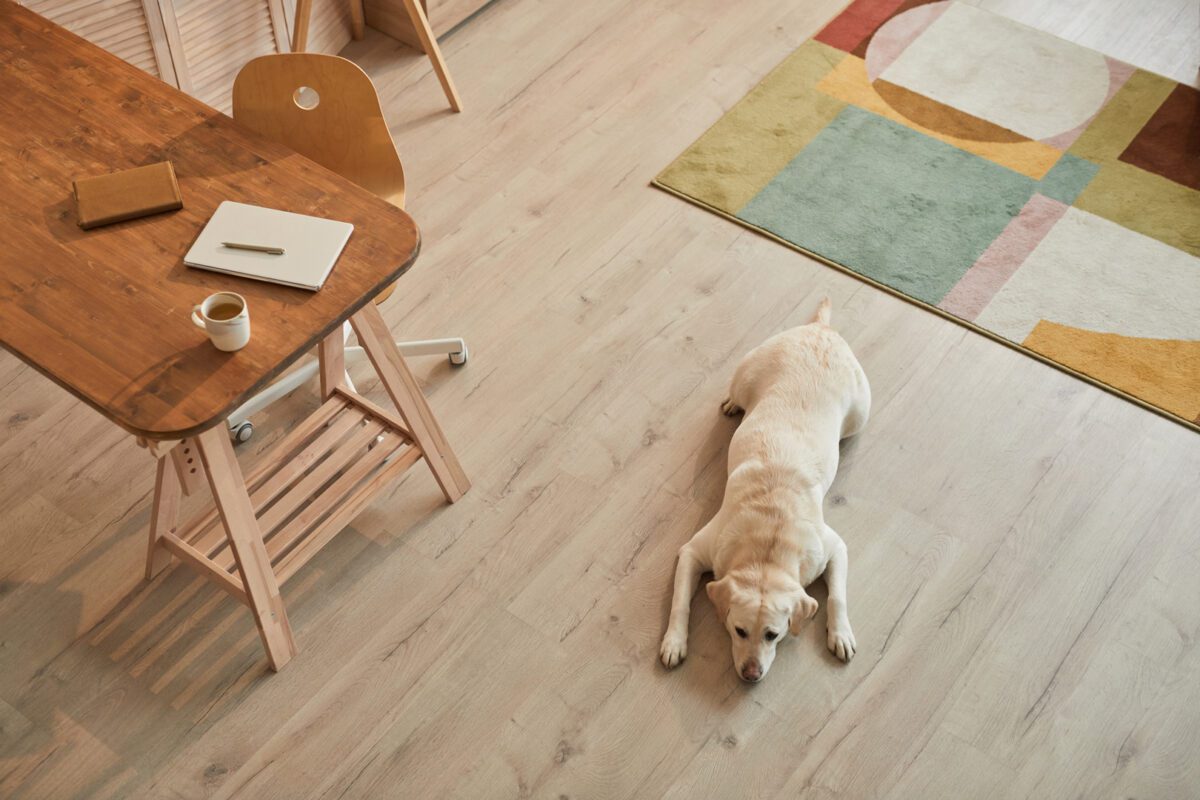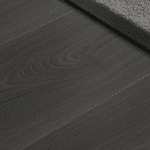Blog
Best Underlay for LVT and Vinyl Flooring

LVT and Vinyl flooring are some of the most cost-effective and beneficial floors on the market, and the only way to make them better is to add an underlay. But what is an underlay, and what’s the best one for this type of flooring?
This article will review the types of underlay that bring out the best in vinyl flooring, and enhance its pros. Read on to find out more.
Types of Underlay
The following are the types of underlay, along with their typical strengths and uses, though bear in mind specialised brand products may have additional features.
Felt Underlay
Felt underlays have two main strong points:
- Sound Absorption – Felt underlays offer good sound absorption, ensuring that impact noise is reduced and noise transmission between rooms is lowered, allowing for more peace and comfort in your home.
- Cost-effective – Felt underlays are made with low-cost materials, making them highly affordable for most homeowners.
Felt does have a limiting negative though:
- Moisture – Felt underlays have very low moisture resistance, meaning when set up in areas like bathrooms or kitchens, they will likely suffer damage quickly.
Foam Underlay
Foam underlays are a versatile option that boasts several pros:
- Cushioning – Foam underlays offer various levels of cushioning due to their multiple thickness options, which is primarily where the soft feeling comes from. In bedrooms, living rooms, or other areas of comfort, foam underlays do well. Best paired with flooring that is otherwise lacking in comfort.
- Thermal Insulation – Foam’s material lends itself well to thermal resistance, which means it doesn’t allow heat to pass through the material.
- Vapour Barrier – Bear in mind that not all foam has vapour barriers. The ones that do tend to be thinner, and are often a top choice for basements that have concrete subfloors, as water can seep into the pores of concrete and maintain moisture. (If you need to protect against water rising up from a concrete subfloor, you may need a damp-proof membrane as additional support).
Foam is wildly popular due to its added benefits, with not many cons to think of. That being said:
- Quality – When it comes to foam underlays, quality is everything. A low-quality foam underlay will compress and wear out much faster than other foam underlays. Whilst quality is a factor for all underlays, we feel it reflects most in low-quality foam.
Crumb Rubber Underlay
Crumb rubber underlays boast two main strengths:
- Sound Reduction – Crumb rubber underlays are unmatched when it comes to acoustic insulation, due to its material makeup, it can very easily absorb and kill sound. Its sound absorption is so good that many homeowners consider it ideal for multi-story dwellings etc.
- Durability – Crumb rubber has exceptional durability. It can withstand a huge amount of foot traffic as a result, and has a huge impact on the final look of your floor.
Crumb rubber does have some drawbacks, however:
- Uncomfortable – Crumb rubber is very dense, but not all that thick. This can be offset by putting it beneath a great floor.
Cork Underlay
Cork is a natural material that has many benefits:
- Moisture Resistance – Cork’s natural material lends itself well to resisting moisture, mould, and mildew. This makes it perfect for putting in areas that are usually fairly wet, such as bathrooms, kitchens and basements.
- Sound Resistance – Cork dampens sounds of both impact noise and airborne sound transmission making your home a quieter place.
- Thermal Insulation – Cork can help with thermal insulation, maintaining stable floor temperatures and stopping heat from escaping through the floor.
- Eco-Friendly – Cork is harvested through sustainable sources – that of cork wood trees, and better yet, it doesn’t harm the trees. They are also biodegradable and non-toxic.
Cork disadvantages are similar to the previous entry:
- Less Soft – Cork isn’t a dense material, but at the same time, it doesn’t offer comfort.
- Odour – Cork has a rubbery odour, although, over time, it dissipates.
Combination Underlay
These underlays are aptly named, promoting several underlay benefits into one underlay:
- All-round performance – Combo underlays mix several benefits of other underlays into one. These include soundproofing, moisture protection, cushioning, sound/thermal insulation – etc.
- Simplified Installation – Some people install multiple underlays for complex rooms with several needs, but a combination underlay cuts out the others.
Whilst not necessarily a con, the following is something to keep in mind:
- No specialisation – Combination underlays can be described as a jack of all trades, but a master of none.
The Best Underlay for Vinyl Flooring (Sheet).
This may be a shock, but it isn’t considered necessary to have vinyl flooring underlay in most cases. This is because sheet vinyl flooring comes with a backing layer that provides cushioning and support. Adding an extra layer of cushioning underlay beneath vinyl flooring may give it a “bounce” – a novelty that will get old fast.
If you were to add vinyl flooring underlay, there are most definitely applications that help, however:
- Uneven Subfloor – If your subfloor has some dips and bumps, this will reflect in the sheet vinyl. As a result, it may be better to get a thin foam.
- Soundproofing – Sheet vinyl doesn’t lend a lot of soundproofing properties. As a result, having a thin sheet of cork underlay increases acoustic insulation.
- Moisture – In moisture-prone areas, such as basements and bathrooms, an underlay with a moisture barrier can create a barrier between the sheet vinyl and the moisture.
The Best Underlay for LVT
LVT is a hard flooring but is very secure, comfortable and warm underfoot. Despite being made up of more layers and generally being of a much better quality than sheet vinyl in all areas except cost (but not value), it doesn’t have one thing sheet vinyl does – the backing layer. This means that LVT is a lot more compatible with underlays.
The first thing to point out is that SoundBarrier (an underlay available at QA specifically created for LVT flooring) is compatible with both Gluedown and Click LVT installations – a rarity with LVT underlays, meaning you really have a one stop shop when you work with QA for your LVT underlay.
The following are the best underlay for vinyl flooring (LVT), but please understand there may be compatibility issues:
- Soundproofing – Cork is a great fit for bedrooms, living rooms and even offices, as they boast fantastic sound insulation qualities that can result in improved productivity or rest. Rubber, also, is fantastic.
- Moisture Protection – Plenty of rubber underlays offer moisture barriers. Bear in mind that LVT is already water resistant, but moisture barriers add further protection.
That being said, some underlays require some extra work to get them to function well. In truth, it’s better to go with underlay options specifically designed for LVT. Whilst we’ve taken the time to go over the different types of underlay, this was mainly so that you understand what each underlay offers. QA has a specific LVT specialised underlay that mimics many of the benefits of the underlays above, and we’d like to introduce you to it below.
SoundBarrier LVT Underlay
The following is QA’s very own underlay designed for LVT. When looking for the best underlay for LVT, understanding this highly compatible flooring will help with all your acoustic solutions and it’s appropriate for both click and gluedown installations.
| Underlay Name | Key Features & Properties | Benefits |
| SoundBarrier LVT Underlay | * Designed for superior sound absorption (up to 24dB reduction – higher than any other LVT underlay available) | * Ideal for minimising noise transfer, especially in multi-level buildings – walking noise is reduced by 31% with this underlay |
| * Suitable for click-lock LVT flooring & gluedown installations | * Protects click-lock joints and makes the floor quieter to walk on whilst offering support to gluedown installations too |
Conclusion
Overall, the right underlay for either LVT or Sheet Vinyl depends entirely on your needs. Whilst the options for Vinyl are fairly sparse and situational, it’s not entirely uncommon for LVT to have their own specialised underlay, such as SoundBarrier, which can further enhance LVTs range of benefits.

